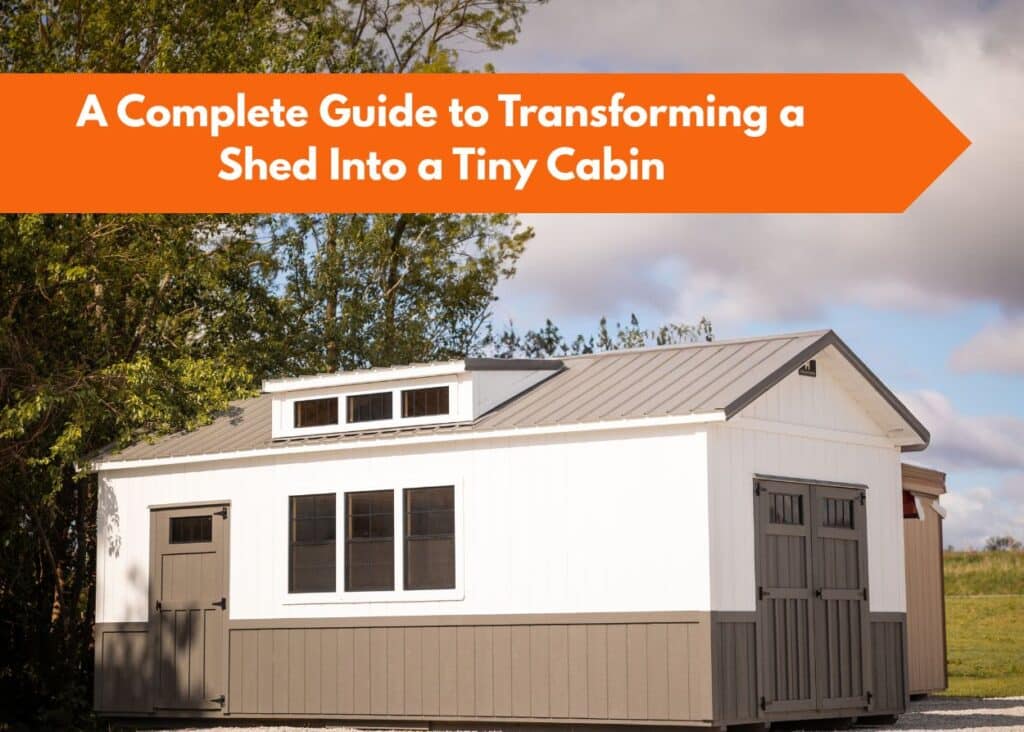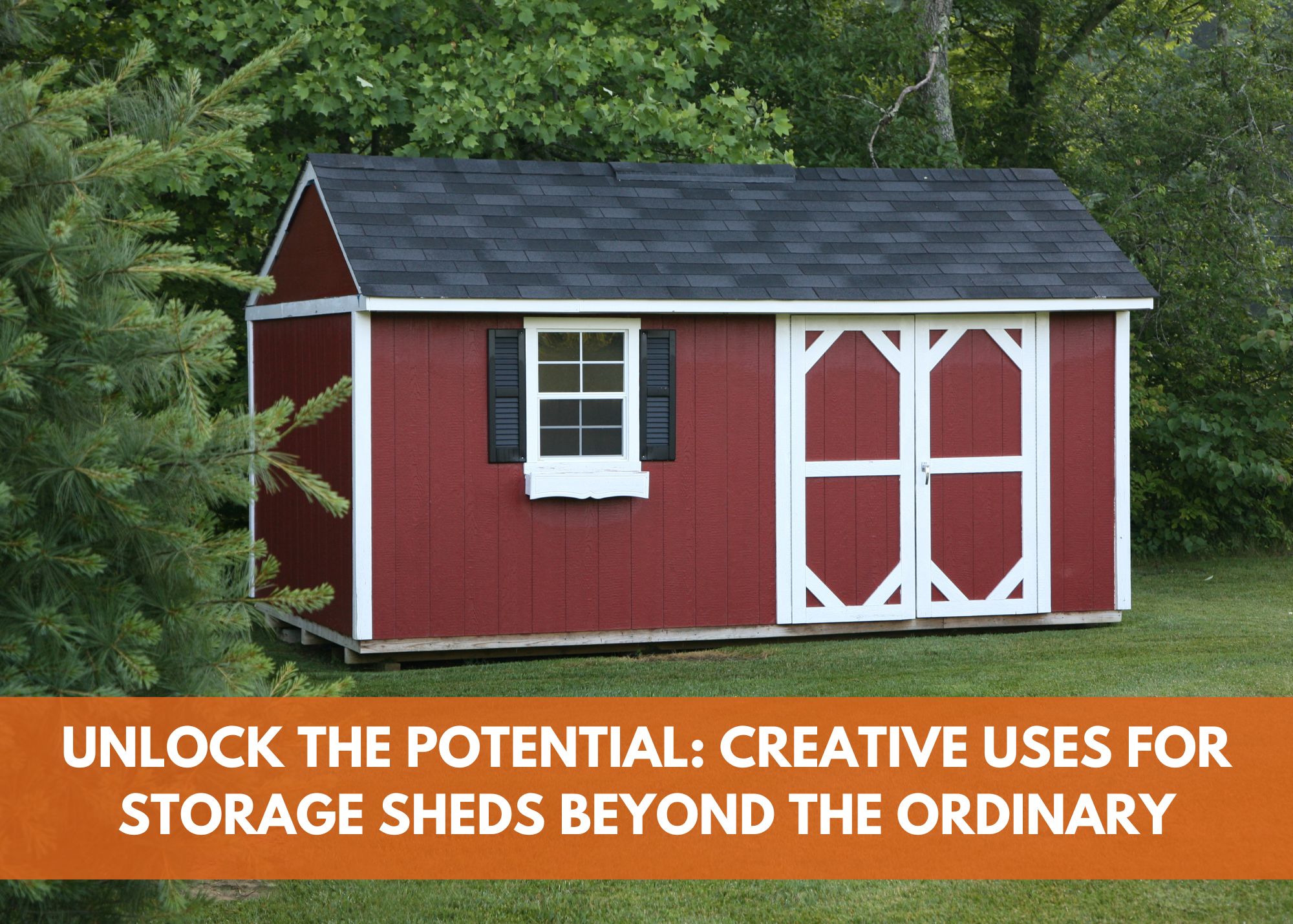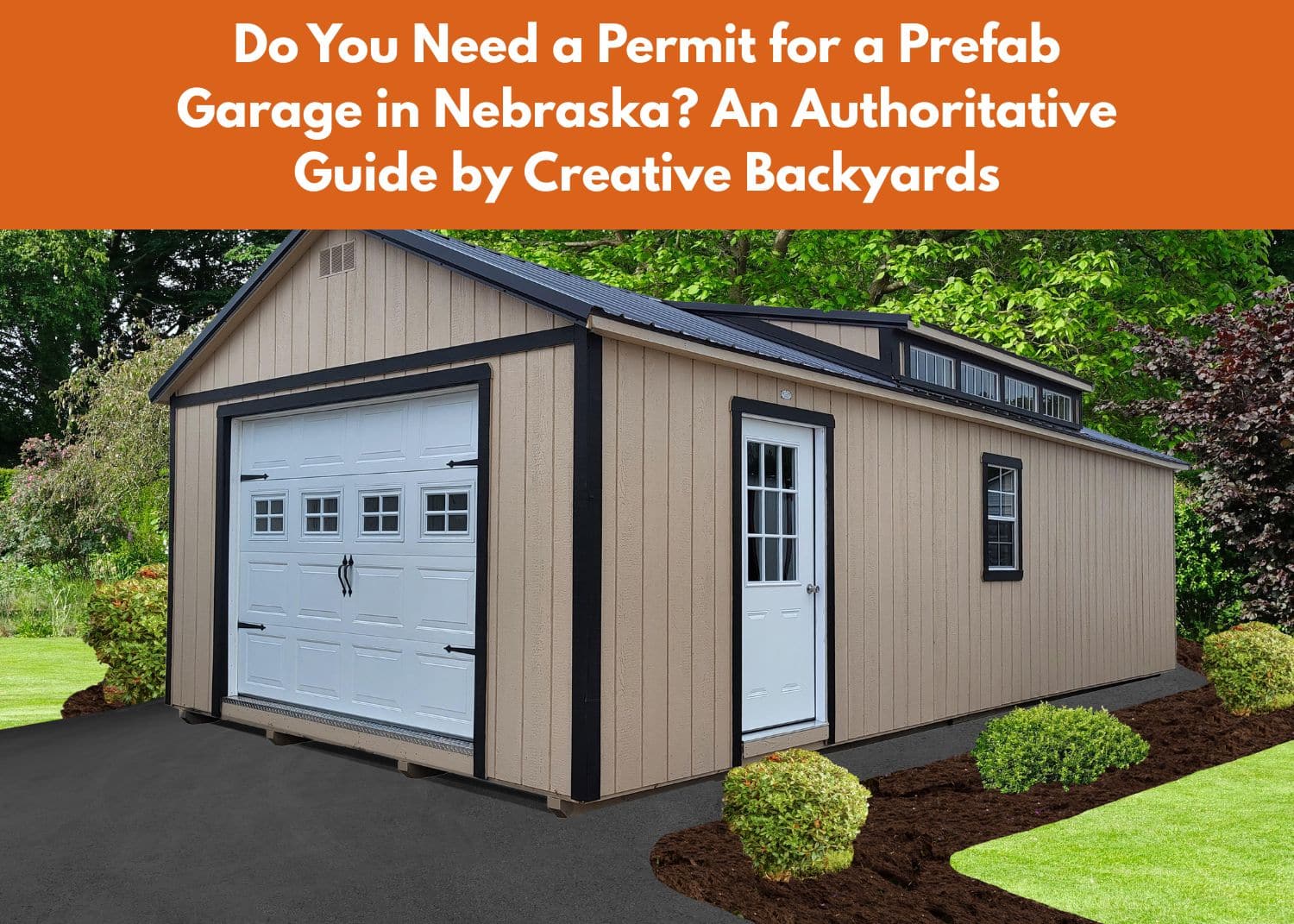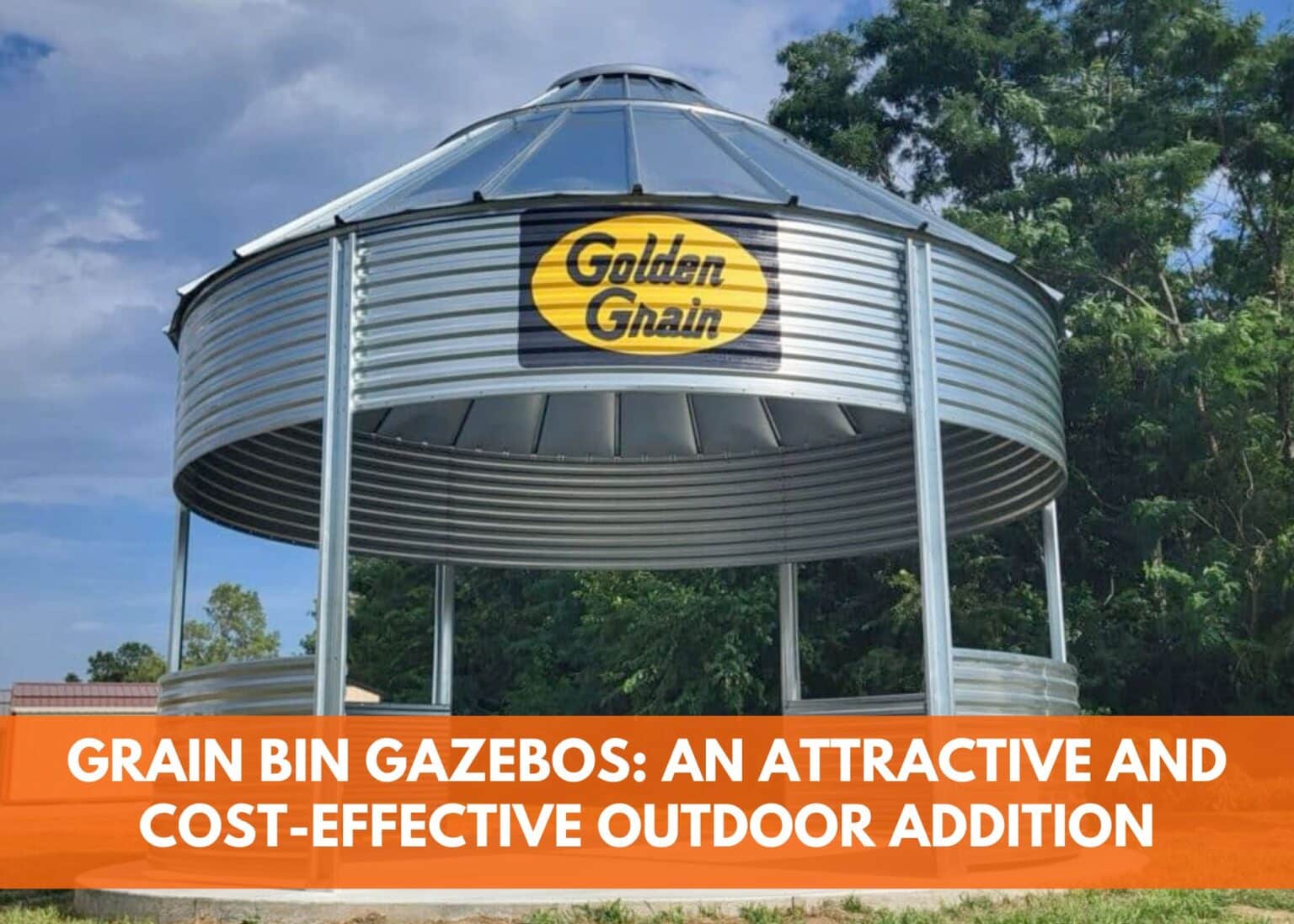
A Complete Guide to Transforming a Shed Into a Tiny Cabin
If you’re looking to create a cozy, cost-effective getaway or even a full-time minimalist residence, you’ll notice that building new structures has gotten quite expensive lately. Building material costs, excluding land and cost of contracting, average about $162 a square foot, making even a small guest house cost as much as a luxury car. Perhaps it’s time to think outside the box.
At Creative Backyards, small spaces can offer big opportunities. Converting a shed into a tiny cabin might be the perfect solution! Based out of Plattsmouth, Nebraska, we proudly serve customers across Eastern and Central Nebraska, Western Iowa, Northwest Missouri, and Northeast Kansas. Through our partnership with Mid-America Structures, we provide high-quality storage sheds built locally and designed with versatility in mind. Whether you dream of a weekend retreat or an off-grid living setup, here’s how to turn a humble shed into your dream tiny cabin.
Table of Contents
- Uses for a Shed Converted into a Tiny Cabin
- Choosing the Right Shed for Your Tiny Cabin Project
- Insulating and Weatherproofing Your Shed for Year-Round Living
- Adding Basic Utilities and Ensuring Comfort
- Design Ideas to Maximize Space and Functionality
- Budgeting and Cost-Saving Tips for a Successful Conversion
- Do’s and Don’ts for Your Shed Conversion Project
- Conclusion
Uses for a Shed Converted into a Tiny Cabin
Before diving into the process, it helps to clarify your end goal. A shed-to-cabin conversion can serve a wide range of purposes, including:
- Guest House: Create a welcoming and private space for family or friends when they visit.
- Rental Cabin: Offer a rustic, budget-friendly stay for travelers through websites such as Airbnb.
- Home Office or Studio: Enjoy a quiet and inspiring work environment in your backyard. No more driving out to the office or studio!
- Hunting or Fishing Cabin: Just because you’re outdoors doesn’t mean you have to be wet, cold, or covered in mosquitoes. Use it as a seasonal retreat with essential amenities.
- Full-Time Tiny Home: Less is more! Embrace a minimalist lifestyle with all the comforts of home.
Knowing how you’ll use your cabin helps inform all design and budget decisions.
Choosing the Right Shed for Your Tiny Cabin Project
Not all sheds are created equal, especially regarding living space. Selecting the proper structure as your foundation is key:
- Size Matters: Most tiny cabins start at around 10×16 feet, or 160 square feet. Consider how much space you’ll need for your desired layout.
- Structure Type: Look for a shed with a solid wood frame, a pitched roof for headspace, and enough windows for natural light.
- Loft Options: Some pre-built sheds have loft areas, which can be converted into sleeping or storage space.
- Customization Potential: Work with a provider such as Creative Backyards, which offers cabin shells ready for finishing.
Our cabin shells are locally built and delivered ready to customize, giving you a strong, weather-resistant base to begin your project.
Insulating and Weatherproofing Your Shed for Year-Round Living
Insulation and weatherproofing are necessary to ensure your cabin is comfortable every season.
- Insulation Types: Use spray foam, rigid foam board, or fiberglass batt insulation for walls and ceilings. Spray foam offers high R-values and air sealing in one.
- Floor Insulation: Don’t forget underfloor insulation to prevent cold drafts from below.
- Windows and Doors: Upgrade to double-pane, insulated windows and sealed exterior doors to keep the weather out.
- Roof and Siding: Consider installing a metal roof and weather-resistant siding to improve longevity and reduce maintenance. A metal roof is a good base for installing solar panels, too.
This step may require the most effort, but it pays off with a cozy interior that stays cool in the summer and warm in the winter, and sealed off from the outside environment so that you won’t have to worry about bugs or the damaging effects of humidity.
Adding Basic Utilities and Ensuring Comfort
Even the simplest cabin needs some modern comforts. Here are the basics to consider:
- Electricity: Install electrical wiring for lighting, outlets, and small appliances. You’ll need to consult a licensed electrician to stay up to code. Solar panels, while expensive up front, can provide off-grid electricity.
- Heating and Cooling: Ductless mini-split air conditioner systems are compact and efficient. Alternatively, you can install a wood stove or propane heater for off-grid living.
- Plumbing: Will you need running water? You can include connecting to a well or water tank with a pump system. Connecting it to the city water and sewer system, a basic necessity in city life, will be a luxury for a cabin. While more expensive, it would make your cabin more desirable if you consider renting it out for short-term stays. For more rural areas, composting toilets and RV-style bathrooms are popular for minimal setups.
- Ventilation: Make sure your cabin has proper ventilation to avoid moisture buildup.
Comfort doesn’t have to be complicated. You can focus on the essentials and add luxuries as your budget allows.
Design Ideas to Maximize Space and Functionality
Small doesn’t have to mean cramped. The key is to maximize your space. Smart design choices can make your cabin feel spacious and inviting:
- Open Layouts: Minimize interior walls to create a sense of flow.
- Multi-Use Furniture: Think about using fold-out beds or convertible futons, benches with storage, stackable chairs, and wall-mounted tables.
- Vertical Storage: Install shelving and cabinets high up to keep floor space clear.
- Lofts and Ladders: Use lofts for sleeping or storage, and opt for ladders or compact staircases. The space under the stairs or ladders can be converted for storage, while the space under the loft can be walled off as a bathroom—with enough space for a shower, sink, and toilet.
- Light Colors and Natural Light: You can make the space feel larger by choosing a light color palette and maximizing your windows.
In addition, personal touches like cozy textiles, plants, and lighting can transform your cabin into a warm and welcoming escape.
Budgeting and Cost-Saving Tips for a Successful Conversion
Turning a shed into a cabin can be budget-friendly compared to traditional construction, but costs can add up. Here’s how to manage your budget:
- Start with a Quality Shell: A quality shed is the basis for creating a lasting cabin. Investing in a solid cabin shell from Creative Backyards reduces the risk of structural problems and saves time and money spent on repairs in the long term.
- DIY Where Possible: Do your own painting, flooring, or cabinet installation if you’re handy. That sweat equity from doing it yourself also yields some surprising benefits.
- Use Reclaimed Materials: Salvaged wood, fixtures, and cabinets can add charm and reduce expenses. Thrift stores are full of inexpensive and charming additions to your little cabin!
- Plan in Phases: Focus on essentials first (insulation, electric, heat), then build out finishes as funds allow.
- Avoid Redo Work: Careful planning up front prevents expensive changes down the road.
A well-managed project can be completed for a fraction of the cost of a traditional tiny home or cabin build.
Do’s and Don’ts for Your Shed Conversion Project
Every DIY project has its challenges. Here are a few tips to keep things on track:
What To Do:
- Check local zoning laws and permits before starting. The place to start is with your local government.
- Remember the importance of a solid roof over your head. Prioritize structural integrity and safety to protect yourself from liability.
- Consider resale value if this may not be a forever home. Tiny spaces are sometimes harder to resell.
- Insulate properly to reduce heating energy use and to make your investment worthwhile.
- Keep moisture control in mind to avoid future issues, such as rot and mold.
What To Avoid:
- Cut corners on utilities and electrical work. This is important! Shoddy utility work, primarily electrical, can lead to fires or electrocution. It also means the work isn’t up to code, so the law and your insurance company will unlikely side with you if something happens.
- Assume you can live in a shed without zoning approval. Find out before buying that shed, or it can be costly.
- Overcrowd the space with bulky furniture. Remember to install multi-use or foldable furniture and surfaces for maximum flexibility.
- Skip ventilation—small spaces trap humidity quickly and could lead to mold. Consider natural and mechanical ventilation methods, such as ridge vents, gable vents, wall vents, exhaust fans, and electric fans. Note that an air conditioner might only cool and recirculate the air in the shed, but not ventilate.
Avoiding common pitfalls ensures a smoother build and a more enjoyable space in the long run.
Conclusion
Converting a shed into a tiny cabin can be a fulfilling and budget-friendly way to create a personal retreat or full-time home.
At Creative Backyards, we make it easier to buy a quality shed by offering quality cabin shells through our partnership with Mid-America Structures. With delivery options throughout Eastern and Central Nebraska, Western Iowa, Northwest Missouri, and Northeast Kansas, we’re here to help you take the first step toward simpler living.
Ready to get started? Visit our website or sales lots to explore cabin shell options, learn more about our services, and connect with our team. Your dream tiny cabin could be just a few steps away!



